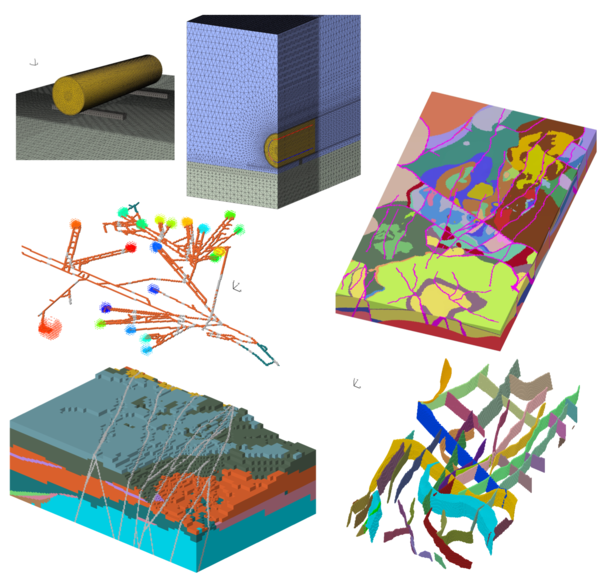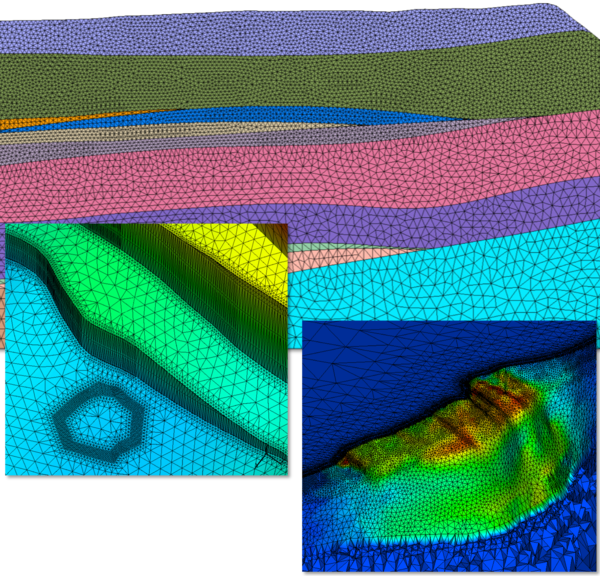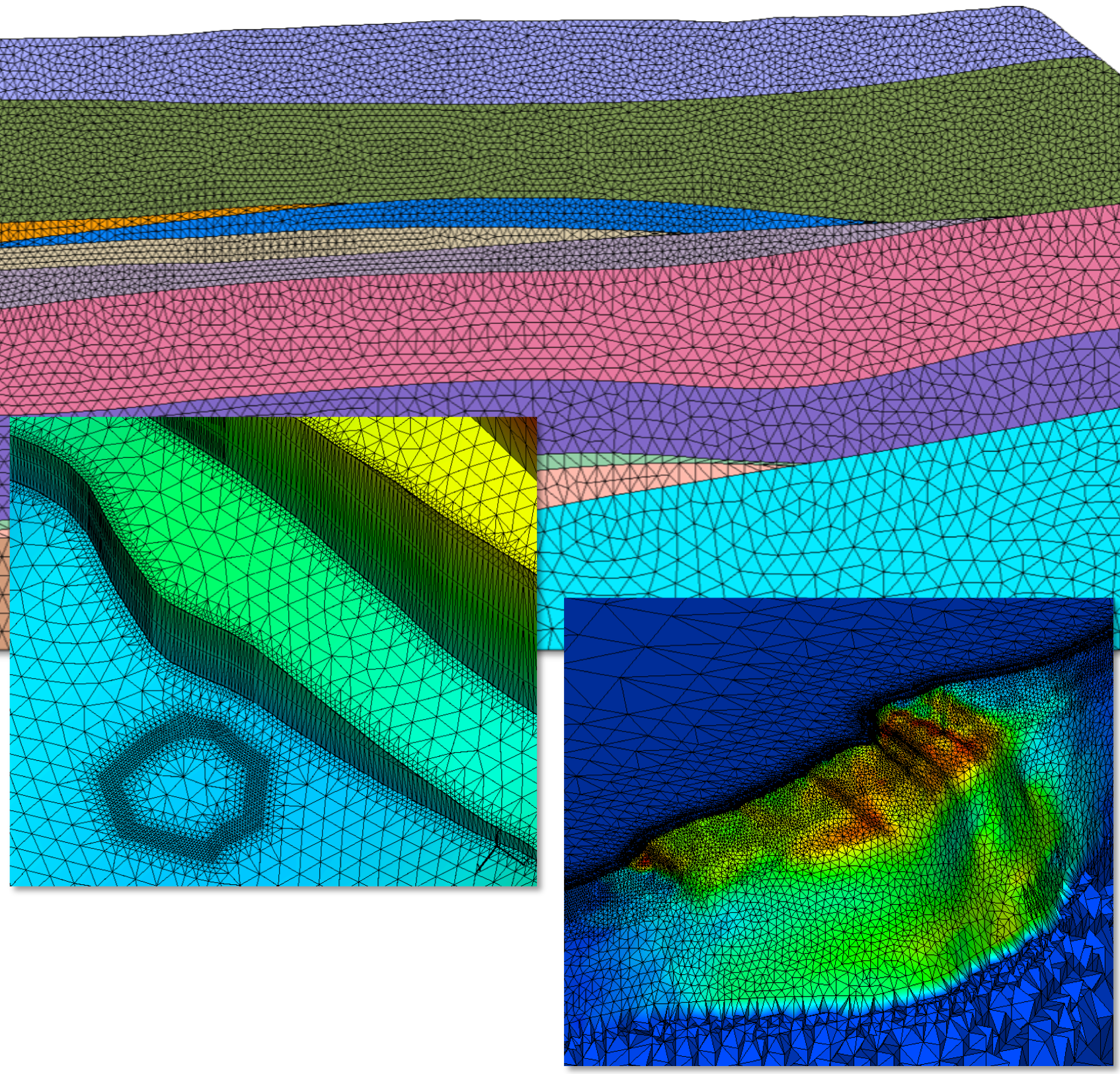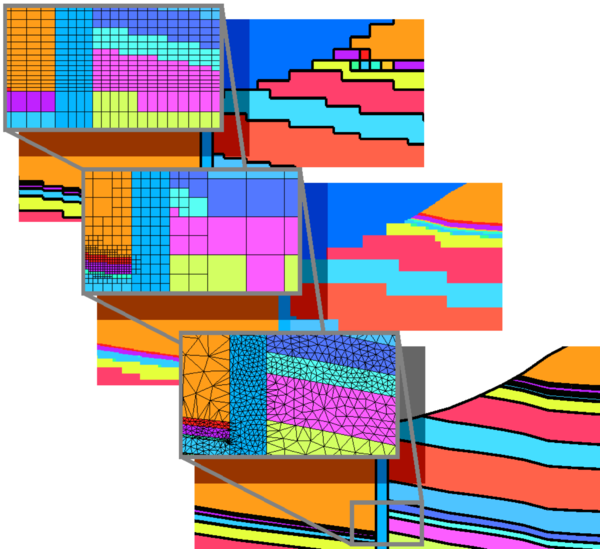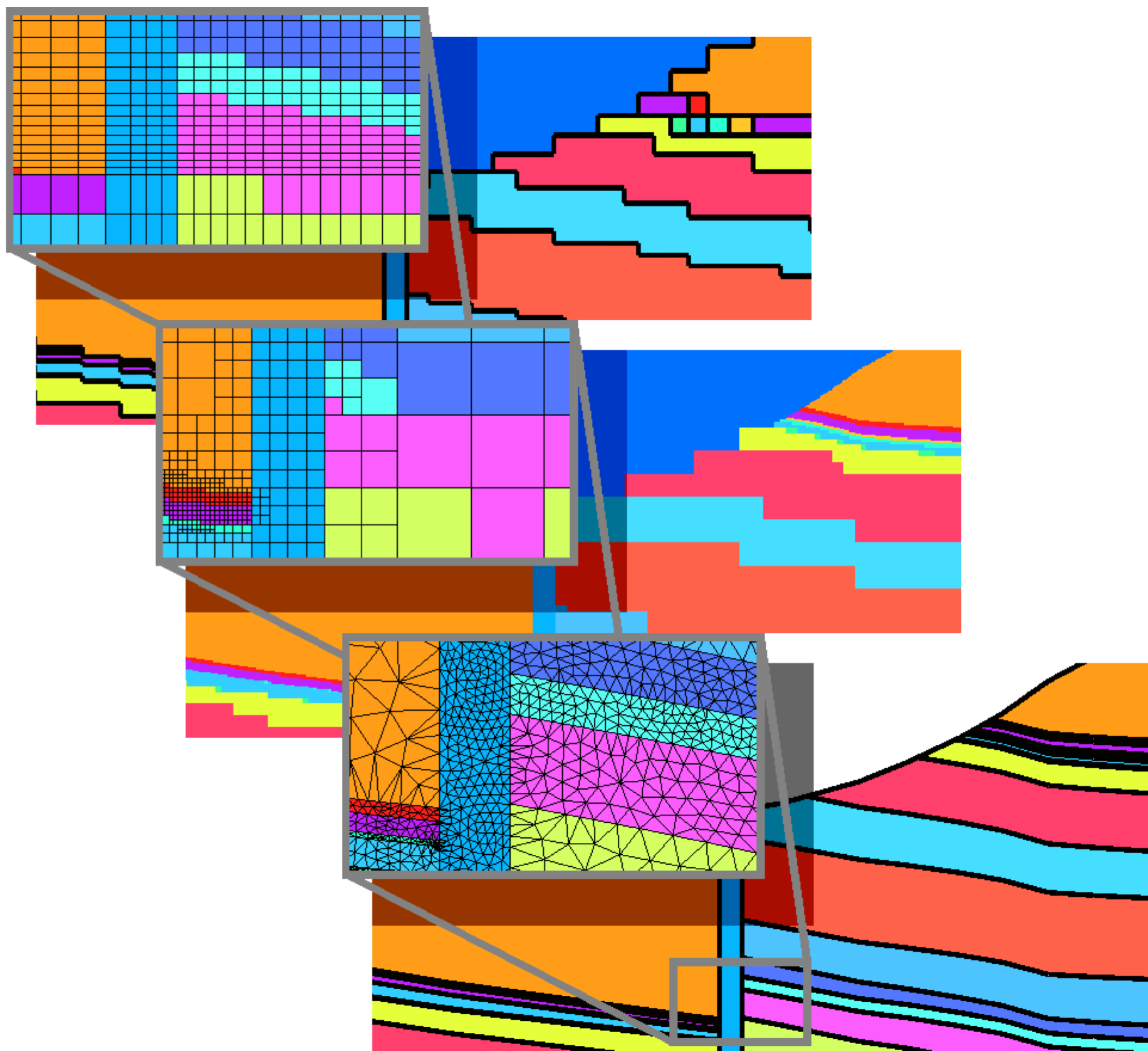Meshing
for Geologic Applications
Our meshing projects represent a wide variety of geological applications where accurate representation of complex engineering systems and geologic structure and stratigraphy is critical to producing accurate numerical models of fluid flow and mass transport. Oil and gas reservoir production, groundwater resource development and waste disposal in a geologic repository are examples of the areas where modeling is used to predict the long term behavior of a system. In all the systems, mesh generation is a key link between the geoscientific information systems and numerical models. The mesh must capture complex geometry and insure the computationals are optimized to produce accurate and stable solutions.
LaGriT (Los Alamos Grid Toolbox) mesh generation software is used for providing mesh generation and model setup. It is used for models with multi-material complex geometries to understand and solve subsurface flow and transport problems not only for earth science applications, but any system that requires requires a mesh and intitial boundary conditions, setting of material properties, and other model setup functions. LaGriT has been used to support various modeling applications including FEHM, Amanzi/ATS, PFLOTRAN, and TOUGH2.
For more details refer to the Geo Meshing Overview (PDF).
Meshing Projects
- CO2, Oil and Gas, Reservoir Modeling
- Watershed and Arctic
- Salt Repository Science
- Discrete Fracture Networks (DFN)
- Southern California Earthquake Center (SCEC)
- LANL Internal Projects access with PIV
- Environmental Restoration at Los Alamos
- Semiconductor Design and High Speed Hydrodynamics
- Yucca Mountain Site Characterization Project (YMP)
- Nevada Test Site Flow and Transport Modeling
Meshing Software
LaGriT is open source and available at Github
Abstract
LaGriT Applications
Currently available at: Docker
Assorted Links
Software often used with LaGriT input and output files include:
ParaView
VISIT
Tecplot
AVS (Advanced Visual Systems)
GMV (General Mesh Viewer)
Software for Voronoi Meshes :
Voro++ reads VoroCrust output files to compute the Voronoi cells as polyhedrons and write image and statistics files.

